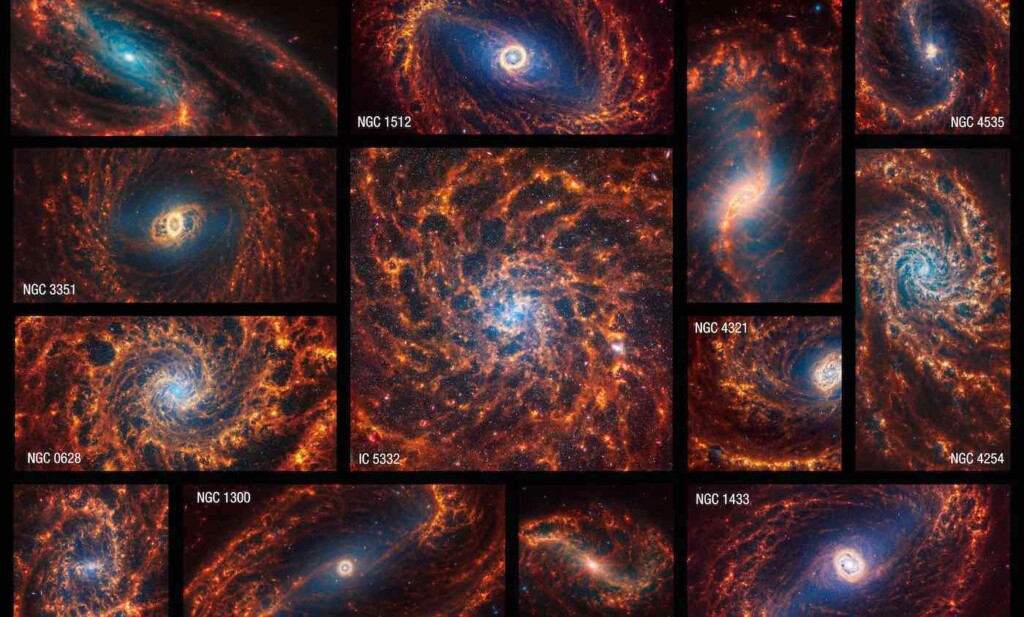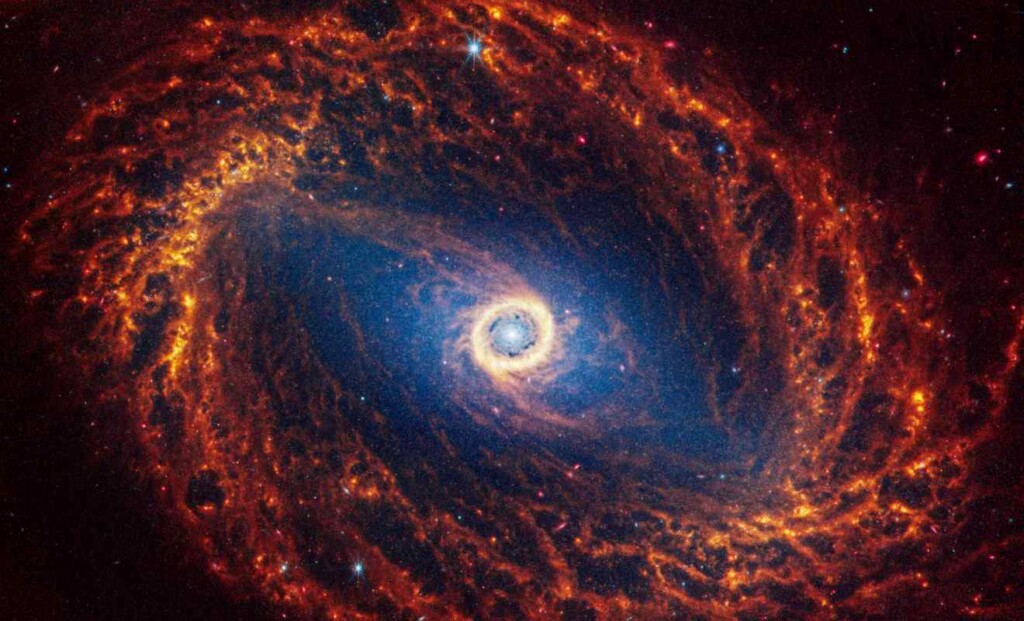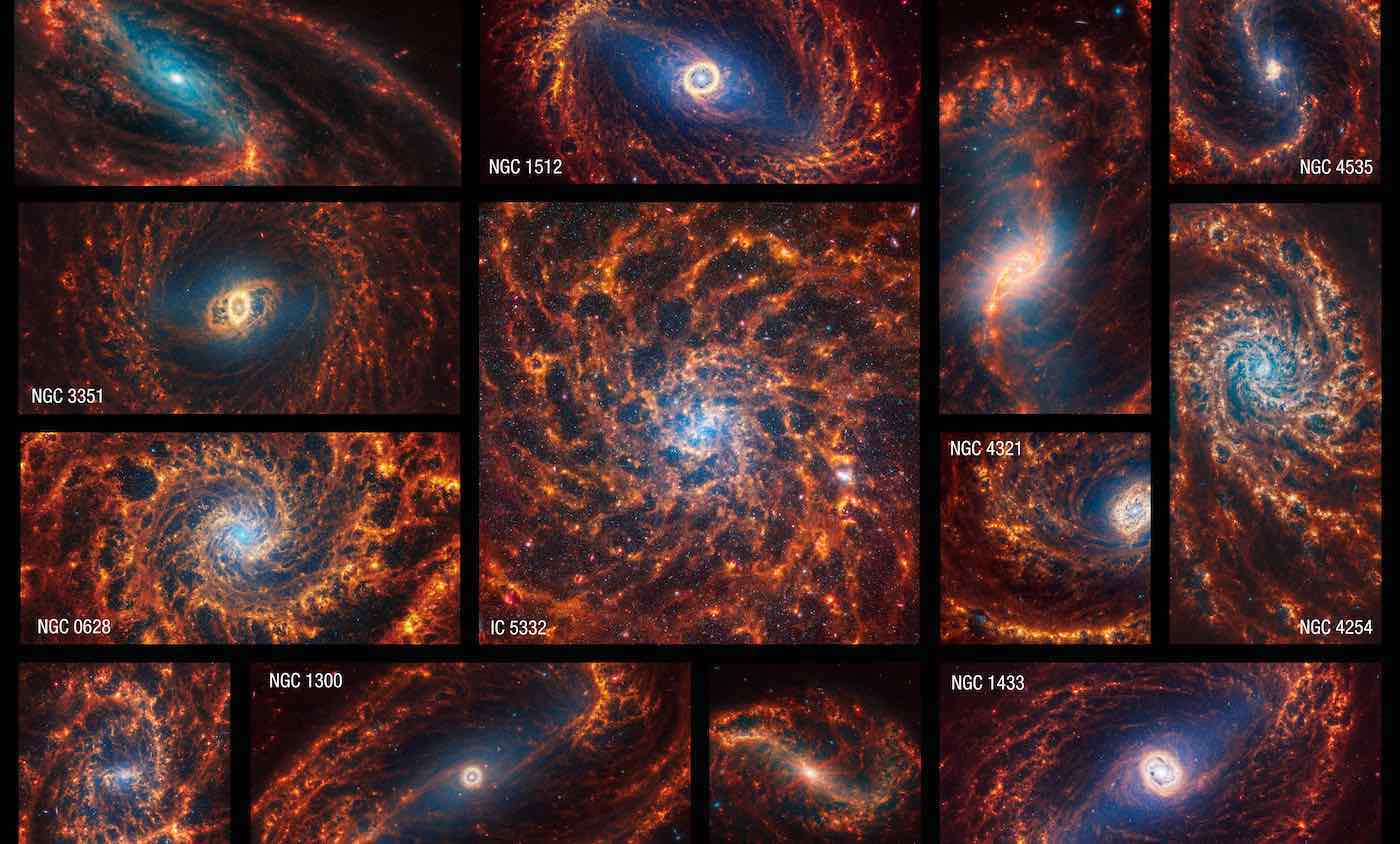
These jaw-dropping pictures of 13 different spiral galaxies were released in a bundle by NASA, and are the result of the space agency’s work using the James Webb Space Telescope.
It wasn’t just hobbyist stargazing however, they are actually part of a long-standing project called the Physics at High Angular resolution in Nearby GalaxieS (PHANGS) program, which is supported by more than 150 astronomers worldwide.
“It’s oh-so-easy to be absolutely mesmerized by these spiral galaxies. Follow their clearly defined arms, which are brimming with stars, to their centers, where there may be old star clusters and – sometimes – active supermassive black holes,” NASA wrote alongside the photo dump.
“Only NASA’s James Webb Space Telescope can deliver highly detailed scenes of nearby galaxies in a combination of near and mid-infrared light.”
One especially cool part of their release to the public is that it replicates how the NASA astronomers themselves were able to see them for the first time—when they flooded the NASA servers after being processed into visible light.
“Webb’s new images are extraordinary. They’re mind-blowing even for researchers who have studied these same galaxies for decades,” explains Janice Lee, a project scientist for strategic initiatives at the Space Telescope Science Institute in Baltimore. “Bubbles and filaments are resolved down to the smallest scales ever observed, and tell a story about the star formation cycle.”
MORE NASA NEWS: NASA Just Found an Ocean World with Atmosphere–The Best Place to Look for Life in Our Galaxy
The reason for this is that many of the fainter stars or clouds of gas and dust simply don’t produce or reflect enough light on their own to be visible in anything other than the infrared spectrum—a frequency of light that the human eye cannot detect.

“I feel like our team lives in a constant state of being overwhelmed—in a positive way—by the amount of detail in these images,” adds Thomas Williams, a postdoctoral researcher at the University of Oxford in the United Kingdom.
MORE WEBB IMAGES: New James Webb Image Shows ‘Crowded, Tumultuous’ Heart of Our Galaxy in Never-Before-Seen Detail
Webb’s NIRCam (Near-Infrared Camera) captured millions of stars in these images, which sparkle in blue tones. Some stars are spread throughout the spiral arms, but others are clumped tightly together in star clusters.
The telescope’s MIRI (Mid-Infrared Instrument) data highlights glowing dust, showing us where it exists around and between stars. It also reveals stars that haven’t yet fully formed; which are still encased in the gas and dust that feed their growth, like bright red seeds at the tips of dusty peaks.
SHARE These Images With Someone You Know Who Loves Space…




















